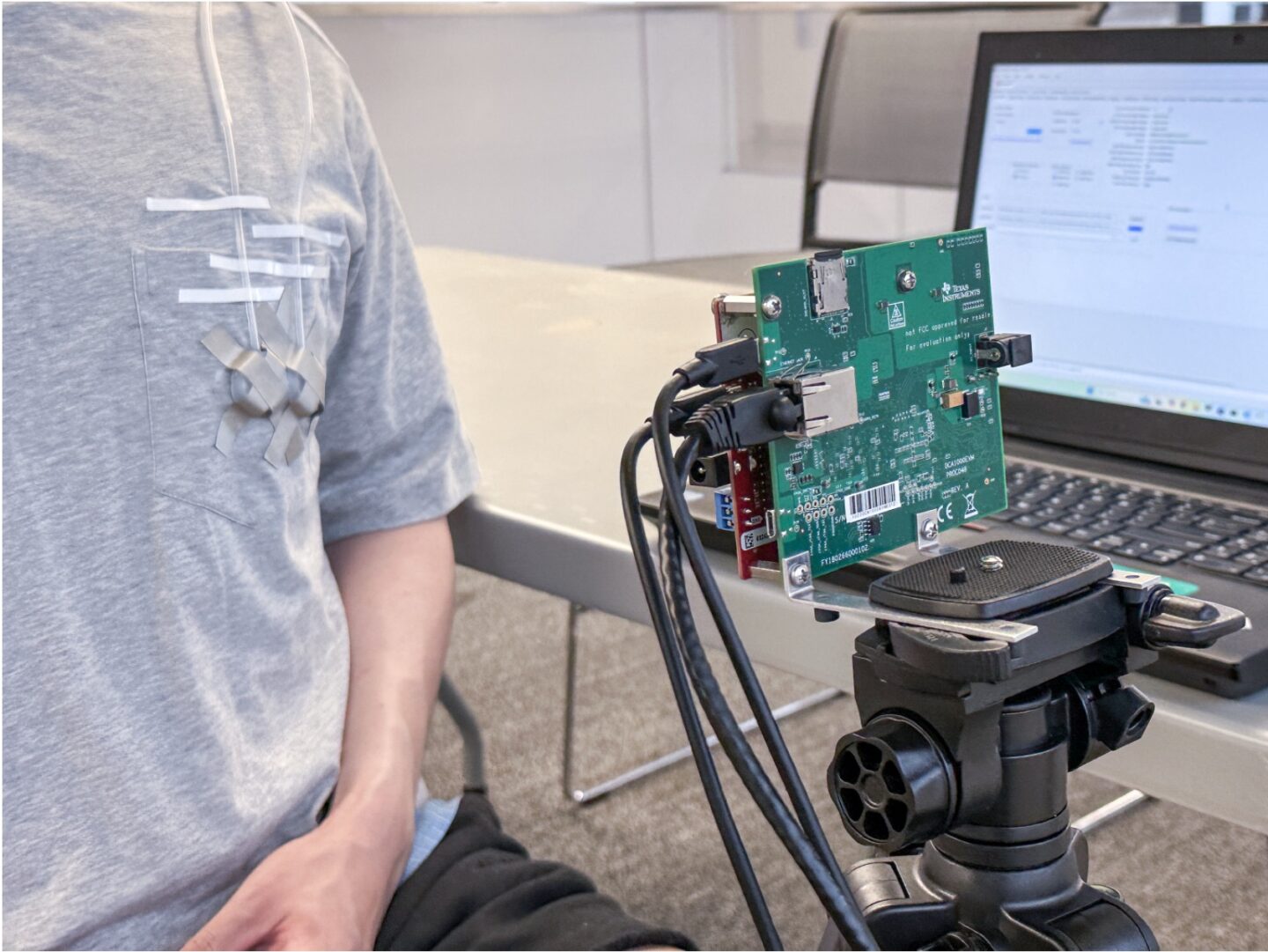
By Sarah Marquart
Wireless health monitoring is rapidly evolving, promising a future where breathing, heart rate, and other key metrics can be tracked passively, continuously, and without the need for wearables, such as smartwatches, fitness trackers, or other bulky medical monitors.
However, with that promise comes a pressing concern: Who has access to the sensitive data collected by these devices, and how much control do users actually have?
That’s the question driving VitalHide, a novel privacy-preserving system developed by researchers at Cornell Tech. Assistant professors Rajalakshmi Nandakumar and Thijs Roumen, along with Cornell Tech Ph.D. students Zekun Chang, Yixuan Gao, and Tanvir Ahmed, unveiled the technology in February 2025 at the HotMobile conference in their paper, “VitalHide: Enabling Privacy-Aware Wireless Sensing of Vital Signs.”
VitalHide aims to restore agency to users without rejecting the benefits of wireless sensing. Roumen, who specializes in digital fabrication and is also affiliated with the Cornell Ann S. Bowers College of Computing and Information Science (Cornell Bowers CIS), emphasized the growing threat of unauthorized monitoring.
“Your TV might collect your heartbeat to gather information on what series excites you, a router at work might inform your employer of your focus during work, and a fan in the waiting room at your insurance company might collect your breathing pattern,” Roumen explained. “In a hospital, it may be great to wirelessly monitor your vitals, and you’d be happy to share that data, but you may want to exclude others from capturing this without your consent.”
That’s where VitalHide stands out. Unlike traditional privacy tools that scramble, block, or limit access only after data is gathered, VitalHide tackles the problem at the source. It uses tiny vibration motors or shape-changing textiles to generate false motion signals — like a decoy heartbeat — to confuse unauthorized sensors.
“Our solution directly ‘encodes’ the physical phenomenon (movement induced by breathing or heartbeat) and only allows trusted actors to access the raw data by sharing the key for decoding,” Roumen explained.
“Authorized devices, knowing this key, can filter out the fake motion signals and accurately recover the true vital signs,” explained Nandakumar, who is also affiliated with the Jacobs Technion-Cornell Institute and Cornell Bowers CIS. “Unauthorized devices, without knowledge of the distribution parameters, cannot distinguish between the real and fake signals and are thus misled.”
The result is seamless, privacy-preserving protection that doesn’t degrade performance for approved health systems or require identifying every nearby device.
Built on a combination of soft robotics, wireless sensing, and functional embroidery, VitalHide’s components can be embedded into clothing or everyday textiles.
The team is working to shrink the system of tiny motors and moving parts — called the actuation system — that creates the protective “fake” motions on the body, making it easier to wear in garments like jackets or vests. They’re also strengthening the system against emerging threats, such as machine learning-powered attacks that attempt to reconstruct biometric signals.
According to the researchers, future improvements include testing across different sensing systems like Wi-Fi and acoustic, as well as creating theoretical guarantees (clear, math-based rules) to show that the system will reliably protect privacy and deliver accurate results.
“It is important to note that VitalHide is not anti-technology,” said Roumen. “Instead, it provides users with the ability to intentionally consent to those who access the vital data. As a marathon runner, I happily track my heart rate with my Garmin watch, but I would not want my heart rate to be tracked by my insurance company.”
The researchers are also conducting user-centered studies to ensure the technology is not only practical but also empowering in practice.
“As new sensing systems are built, there is increasing awareness of privacy concerns, and efforts like VitalHide represent early steps toward designing technologies that recognize these challenges from the beginning,” said Nandakumar. “Building privacy-aware systems is becoming integral to advancing wireless health technologies, not something separate or conflicting with their benefits.”
Ultimately, VitalHide may mark a significant turning point in how society balances innovation with individual rights.
“Without most people’s knowledge, technology has gotten incredibly powerful at detecting and distilling data about our vitals,” said Roumen. “The latest development of this being done wirelessly raises a red flag for how much we should blindly rely on such technological usage and where we draw the line for our privacy. Now is a good time to give people the ability to consciously decide who accesses their data and who doesn’t.”
Sarah Marquart is a freelance writer for Cornell Tech.





